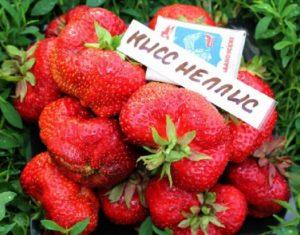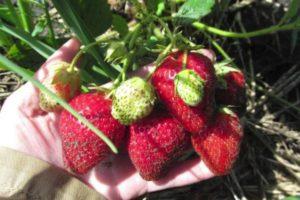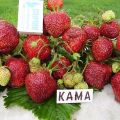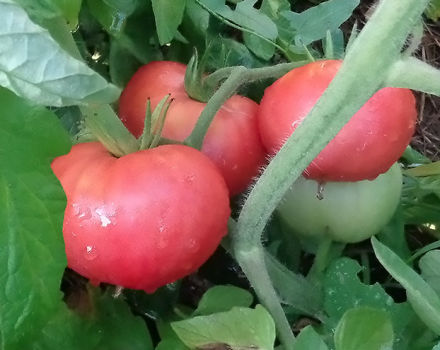Description and characteristics of the strawberry variety Solovushka, growing rules
The work of domestic breeders has brought many different varieties of strawberries, among which Solovushka takes pride of place. The variety of berries has appeared quite recently. During its existence, the Solovushka strawberry has become popular among professional and amateur gardeners.
Variety history
Breeders from Bryansk became the authors of the variety. More than 10 years have passed since the appearance of strawberries. The variety did not pass the tests, therefore it was not included in the State Register.
Description and characteristics of strawberry Nightingale
Strawberries have certain characteristics by which you can know what the variety is.
Fruit
The shape of the berries is round-conical, evenly colored bright red. A characteristic shine is visible on the surface of the berries. Each strawberry is covered in yellow seeds. They are not planted deeply, and the number is characterized as medium.
The section shows bright red flesh with a white stripe. With an average density, the berry is not watery. There are specimens with an empty core. If it rains while the berries are ripening, the strawberries turn out to be a little watery and softer..
Nightingale has a rich flavor, free from excessive acid. The berries give off a strawberry aroma with hints of musk. People who have tasted strawberries report a balanced taste.
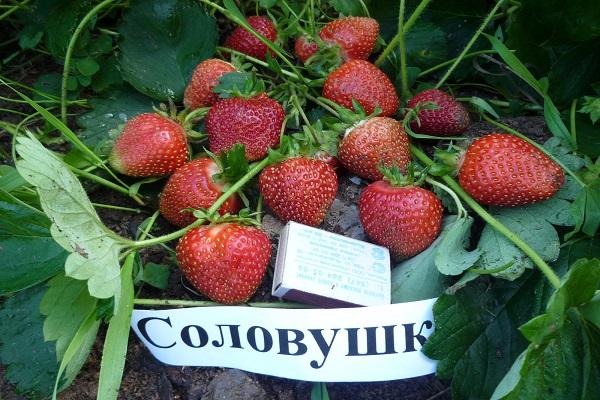
Shrubs
The plant has a rounded shape. It is considered vigorous, but at the same time remains compact. On the branches there are spreading peduncles. During the flowering period, many white flowers with yellow stamens can be seen on the bushes.
A large number of antennae are formed on each bush. This is especially noticeable in the first year after planting a young plant.
After the end of fruiting, in the second year, the formation of whiskers in the variety decreases.
Yield
The first ripening berries weigh about 50 g. With each subsequent harvest, the weight decreases. 50-60 berries are collected from each bush. With optimal temperature conditions and proper care, 0.5 kg of the crop is harvested from one bush.
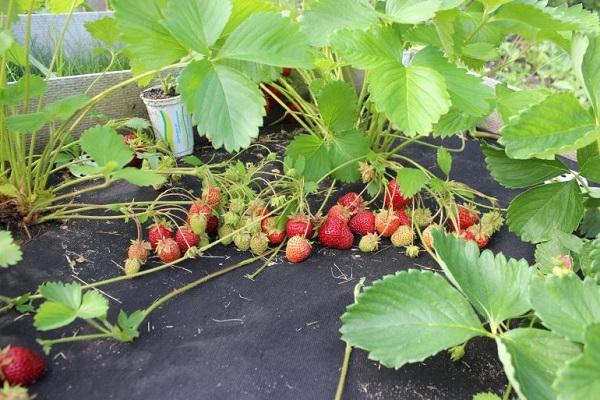
The merits and demerits of culture
Among the advantages are:
- friendly ripening of fruits;
- average ripening period;
- versatility in use;
- frost resistance;
- the variety is used as a parent variety for other strawberry varieties;
- good resistance to spider mites, spotting and powdery mildew.
The most common disadvantages are:
- Medium density pulp, voids are common.
- With frequent precipitation, transportability decreases. In this matter, Solovushka is inferior to domestic varieties.
- In regions with unfavorable climatic conditions, susceptibility to gray mold increases. The root system of the plant suffers.
- The berries become very shallow at the end of the harvest.
Considering Nightingale as a strawberry variety for cultivation, all the pros and cons are weighed. Fortunately, the variety has many more advantages than disadvantages.
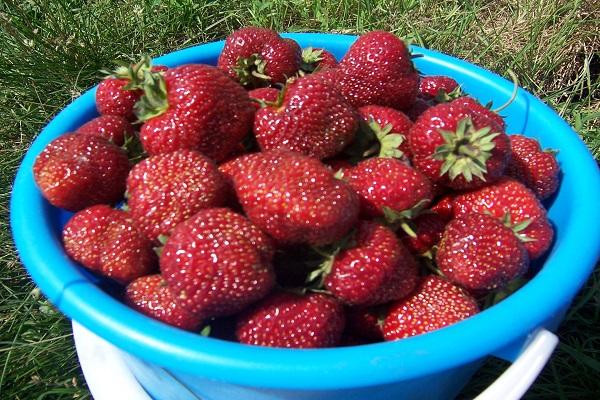
Plant growing rules
Features of growing Nightingale are practically no different from other varieties of strawberries. All she needs is planting in the right place, preparing seedlings, adhering to the planting scheme, and also care. The last point plays the most important role that everyone should consider.
How to choose seedlings
This information is required for study if the choice is made by a beginner in this matter. There are certain characteristics of the sprouts that indicate that they are most suitable for growing. These are the following:
- the roots of the seedlings must be at least 7 cm;
- there are 3-5 leaves on a suitable sprout;
- the roots are painted in a light shade;
- the growth point has a rich green color;
- the root collar should be of medium thickness;
- absence of traces of insects, mechanical damage, as well as symptoms of diseases on the seedlings;
- the stem should be strong in appearance and by no means thin.
The correct choice of seedlings is the key to a successful harvest. If a person is not sure whether he will grow, it is recommended to plant several at once. 1 or 2 will definitely take root.
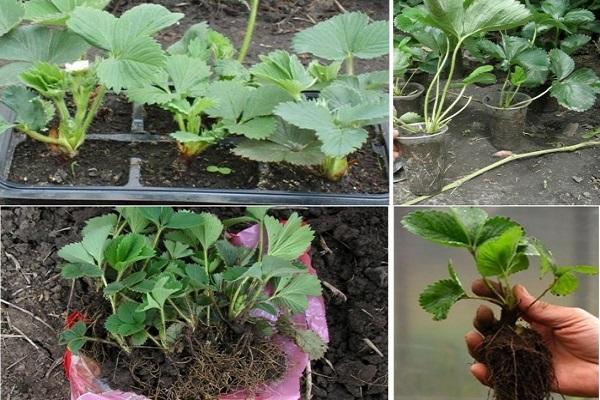
Site selection and soil preparation
Strawberries grow on light soils. If there is no such land, the site is created independently by mixing river sand, peat and humus. This combination will make the soil airy, moisture and breathable.
To neutralize large amounts of sand, clay is added to the composition.
Slightly acidic as well as neutral soils are welcome. Gardeners plant strawberries in wetlands, hoping that the plant will thrive. But instead of active growth and fruiting, they are faced with strawberries, the appearance of which is deteriorating every day. Acid soils and salt marshes are categorically not suitable for arranging berries.
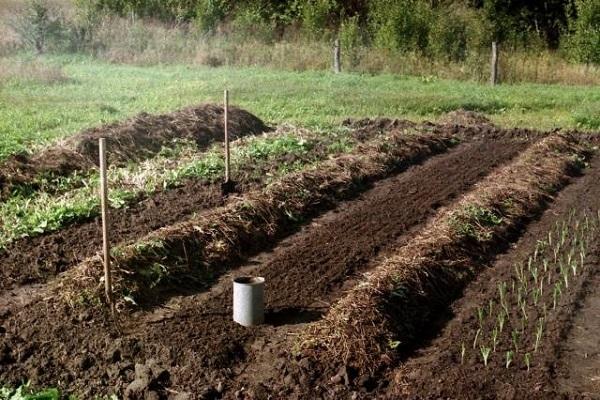
Landing scheme
The standard planting scheme implies 40-50 cm of free space between the bushes. In this case, a two-line arrangement of sprouts is carried out. Another, more compressed version is also possible - 30-25 cm between the bushes.
The second option seems attractive because it saves space, but caring for the planted strawberries with this scheme requires more attention. A person should regularly feed and remove sprawling bushes. Otherwise, the rows close, which brings a lot of inconvenience. The nightingale can be planted according to the standard scheme - 4 bushes per 1 sq. m. This trick is used by novice gardeners.
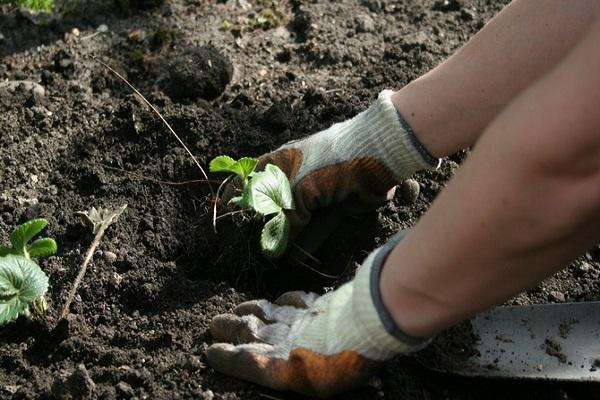
Crop Care Tips
Various activities aimed at good growth of strawberries in order to obtain a harvest are no different from caring for other varieties.
Spring period
As soon as the weather stabilizes outside and the snow melts, the strawberries are freed from their shelter. Old leaves that have dried up are removed. If necessary, bushes are dug up that will not recover.
When the root system is exposed, it is buried in the ground, making sure that the point always remains on the surface. After that, the beds are loosened. It is recommended to deepen the tool by 5 cm. Then the beds must be watered.
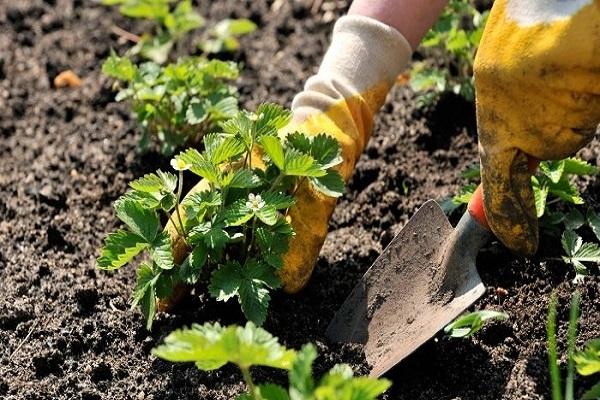
Watering and mulching
To saturate the beds with moisture, warm settled water is used.The soil on which the strawberries grow should be moist, but not soggy. When watering, they try not to fall on the shoots, only on the soil around the stem.
Do I need to mulch strawberries? The answer is definitely yes. This procedure retains moisture, prevents it from evaporating quickly and keeps the berries clean. Needles, sawdust, straw or agrofibre are used as mulch. In extreme cases, it can be ordinary cardboard.
Top dressing
During the first year after planting, the seedlings are fertilized with potassium and phosphorus. In the second year, strawberries are fertilized in early spring. The plant is saturated with a special complex consisting of various microelements.
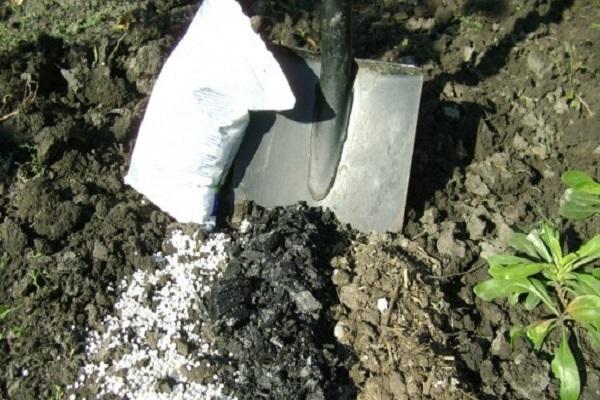
Preparing for winter
In the fall, preparations begin for the coldest time of the year - winter. In this case, mulching is indispensable. The coating layer varies depending on the growing region. For greater reliability, the layer of mulch is covered with spruce branches.
Diseases and pests of the variety
The appearance of brown and white spots, as well as the defeat of gray mold, is observed under unfavorable growing conditions. To protect strawberries from pathogenic pathogens, preventive measures are taken. Fungicide treatment will protect against diseases such as late blight.
Breeding methods
Nightingale's new sprout is obtained by different methods. This is the division of the bush, reproduction by seeds and antennae. Each of them is characterized by certain features.
Seeds
The method completely preserves varietal qualities. The technique is popular among experienced gardeners. But getting seedlings by seed is not easy. It takes a lot of effort to get strong shoots.
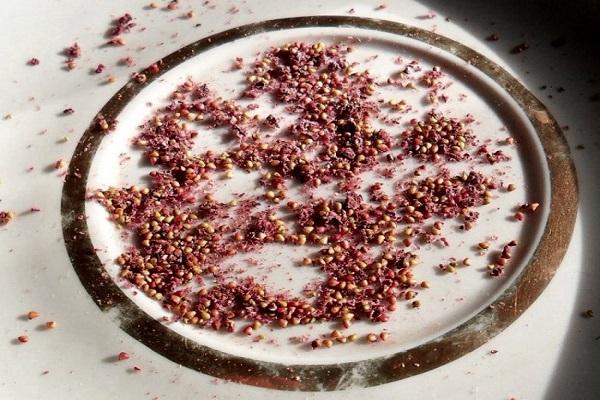
Antennae
Active formation of antennae on strawberries is observed in the first year after planting in a permanent place. They tend to take root on their own, but for a good result they make sure not to miss the moment and avoid it. Twigs are germinated separately in containers.
Division
After the bushes have spent a year on the site, they can be divided and planted in a new place. The selected sprout must have a developed root system and hearts.
Harvesting and storage
Strawberries are not capable of long shelf life. Fresh berries are processed immediately after harvest. Shipped over short distances.
